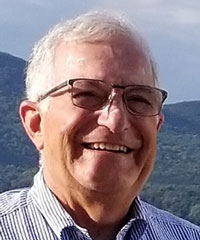
Chair of ASA(ALT)’s Board on Army RDT&E,
Systems Acquisition, and Logistics (BARSL),
“Challenges in Assessing Counter-sUAS Systems for DoD and DHS”
Mr. Albert A. Sciarretta, PE, is President of and sole performer within CNS Technologies, Inc. In this position, he works primarily as an independent consultant to various organizations. For more than 35 years, as a U.S. Army officer (retired as a Lieutenant Colonel) and civilian contractor, he has used his operational, research and development, operations research, prototyping and experimentation, mechanical engineering, and human performance assessment experience to assess the military benefits of technologies and develop technology investment strategies.
As a consultant to the DoD Test Resource Management Center (TRMC), he has served more than 17 years as a subject matter expert (SME) for advanced test technologies. Most recently, he is assisting TRMC in identifying test range infrastructure needs for testing counter-small aircraft system (C-sUAS) systems. In another consulting job, the U.S. Bureau of Prisons has asked Mr. Sciarretta to design and execute two tests at Federal Correctional Complexes: 1) a test of C-sUAS systems and 2) a test of devices designed to remotely detect cell phones in federal prison facilities.
Mr. Sciarretta chaired the 2017 National Academies of Sciences, Engineering, and Medicine (NASEM) ad hoc study on “Counter-Unmanned Aircraft System (CUAS) Capability for Battalion-and-Below Operations.” The committee report has been downloaded all over the world and is in the top 8 percent of National Academy Press downloads. He previously served as a committee member for six separate NASEM studies, including “Technology Development for Army Unmanned Ground Vehicle,” “Advanced Energetic Materials,” and “Making the Soldier Decisive on Future Battlefields.” He is currently a member of the NASEM Board on Army Research and Development (BOARD), a member of the NASEM Intelligence Science and Technology Experts Group (ISTEG), and the Chair of the ASA(ALT) Board on Army RDT&E, System Acquisition, and Logistics (BARSL).